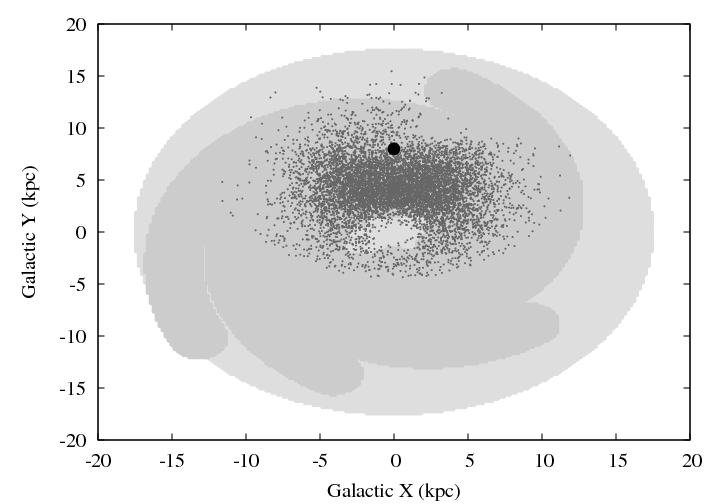Daily Image
30-03-2011Prospects for accurate distance measurements of pulsars with the SKA
| Submitter: | Roy Smits |
| Description: | Parallax distance measurement is a technique where the orbit of the Earth around the Sun is used to determine the distance to stellar objects out to a distance of several thousand parsec. The accuracy of the parallax measurement depends on the accuracy at which the position of the source on the sky can be determined. The planned multi-purpose radio-telescope, the Square Kilometre Array (SKA), will allow for very precise astrometry of radio sources, thanks to its high sensitivity and baselines of up to 3000 kilometres. One type of objects that the SKA will look for are radio pulsars, rapidly spinning neutron stars that emit radio-waves in a beam. Measurements of their distance allow for accurate measurements of the interstellar electron density and contribute to accurate tests of general relativity using binary systems. We performed simulations to estimate the number of pulsars for which the parallax can be measured with the SKA and the distance to which a parallax can be measured. We compared two different methods. The first method measures the parallax directly by utilising the long baselines of the SKA to form high angular resolution images. The second method uses the arrival times of the radio signals of pulsars to fit a transformation between time coordinates in the terrestrial frame and the co-moving pulsar frame directly yielding the parallax. We find that with the first method a parallax with an accuracy of 20% or less can be measured up to a maximum distance of 13 kpc, which would include 9000 pulsars. By timing pulsars with the most stable arrival times for the radio emission, parallaxes can be measured for about 3600 millisecond pulsars out to a distance of 9 kpc with an accuracy of 20%. The image shows a scatter plot of the pulsars for which accurate parallax measurements can be obtained with the SKA. This yields a total of 12,600 lines of sight from which the interstellar electron density can be mapped out to 13 kpc! Smits et al. 2011, A&A 528, 108 |
| Copyright: | Roy Smits |
| Tweet |  |
